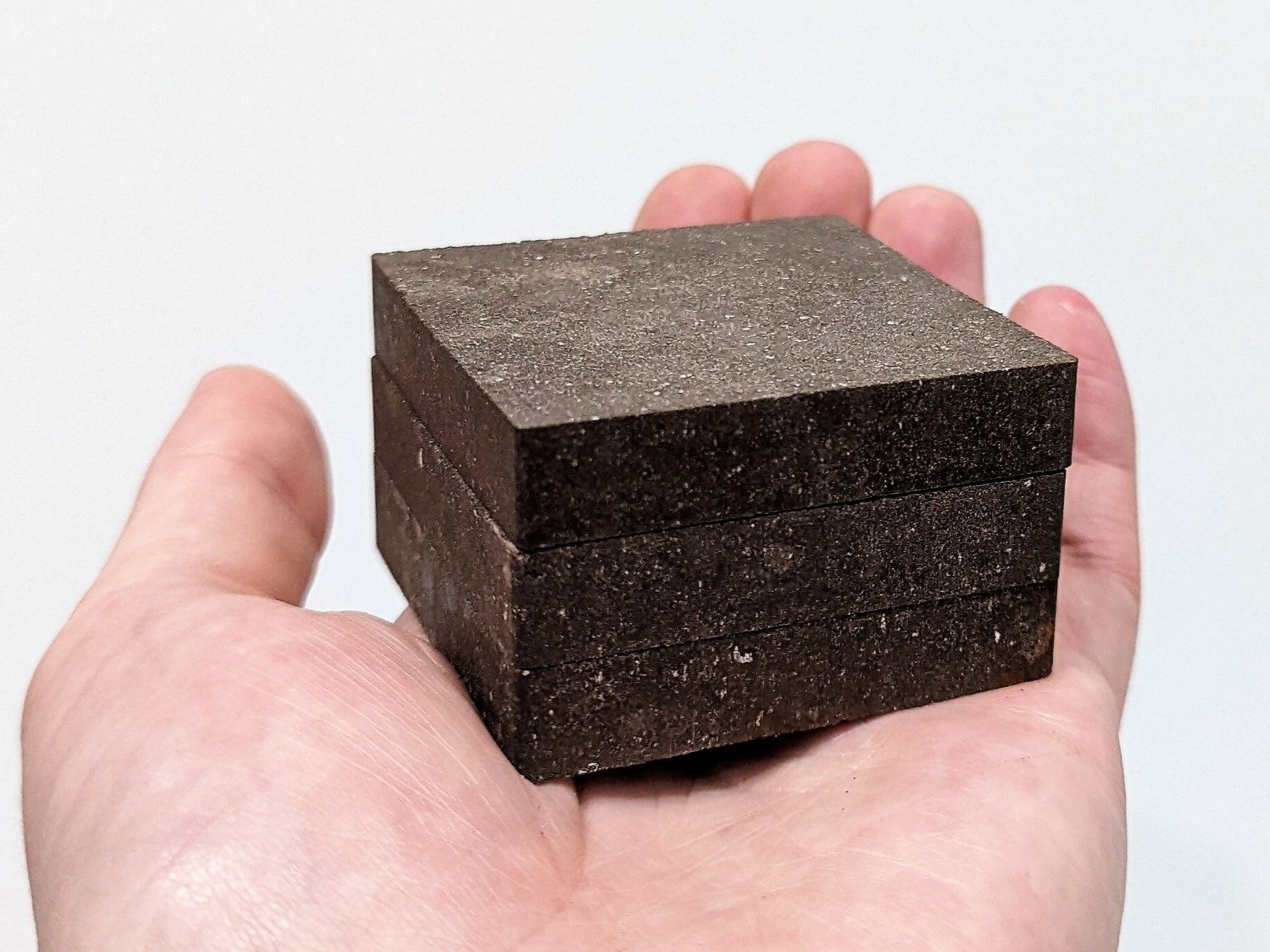Scientists invent ‘cosmic concrete’ to build houses on Mars
Astronaut’s tears, crisps and Martian soil combined to make ‘StarCrete’, which is twice as strong as ordinary concrete

Scientists have invented a new type of “cosmic concrete” made with extra-terrestrial dust that they say can be used to build habitats on the Moon and Mars.
Dubbed StarCrete, the material is twice the strength of ordinary concrete and bypasses the need to transport costly construction materials to off-world locations.
The team behind the discovery, based at the University of Manchester, had previously developed a concrete material that used the blood and urine of astronauts as a binding agent for the Martian soil, however this was seen as impractical for large-scale projects.
The new StarCrete instead uses potato starch and a pinch of salt – both of which are commonly found on space missions – in order to bind the simulated Martian dust.
“Since we will be producing starch as food for astronauts, it made sense to look at that as a binding agent rather than human blood. Also, current building technologies still need many years of development and require considerable energy and additional heavy processing equipment which all adds cost and complexity to a mission,” said Dr Aled Roberts, Research Fellow at the Future Biomanufacturing Research Hub, and lead researcher for this project.
“StarCrete doesn’t need any of this and so it simplifies the mission and makes it cheaper and more feasible. And anyway, astronauts probably don’t want to be living in houses made from scabs and urine.”
The scientists calculated that a 25kg sack of crisps would contain enough starch to produce around half a tonne of StarCrete, which is roughly 213 bricks.
The salt needed to strengthen the material could also be obtained from the tears of astronauts, or from compounds found on the Martian surface.
The team has set up a startup called DeakinBio in order to continue improving and testing StarCrete, which they claim has the potential to be used for buildings on Earth as a more environmentally sustainable alternative to common concrete.
The research was detailed in a study, titled ‘StarCrete: a starch-based biocomposite for off-world construction’, published in the journal Open Engineering.
Subscribe to Independent Premium to bookmark this article
Want to bookmark your favourite articles and stories to read or reference later? Start your Independent Premium subscription today.

Join our commenting forum
Join thought-provoking conversations, follow other Independent readers and see their replies